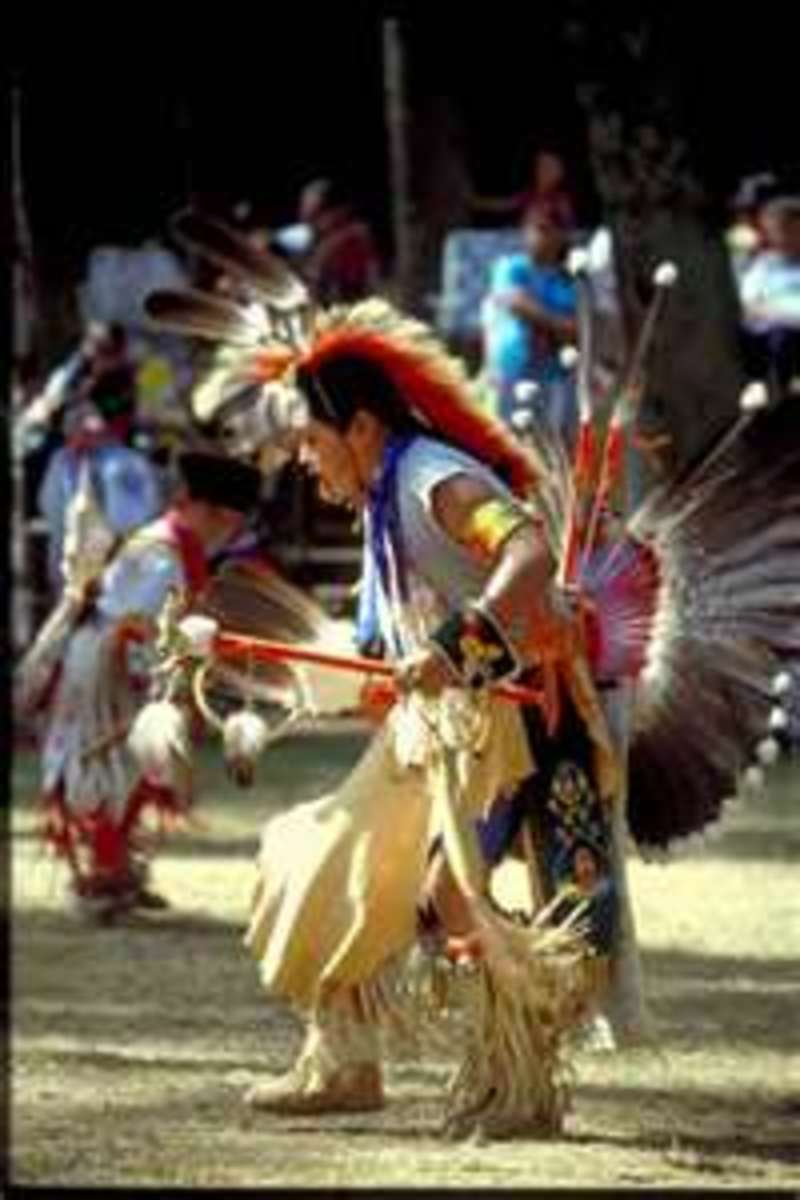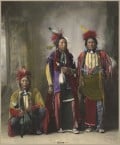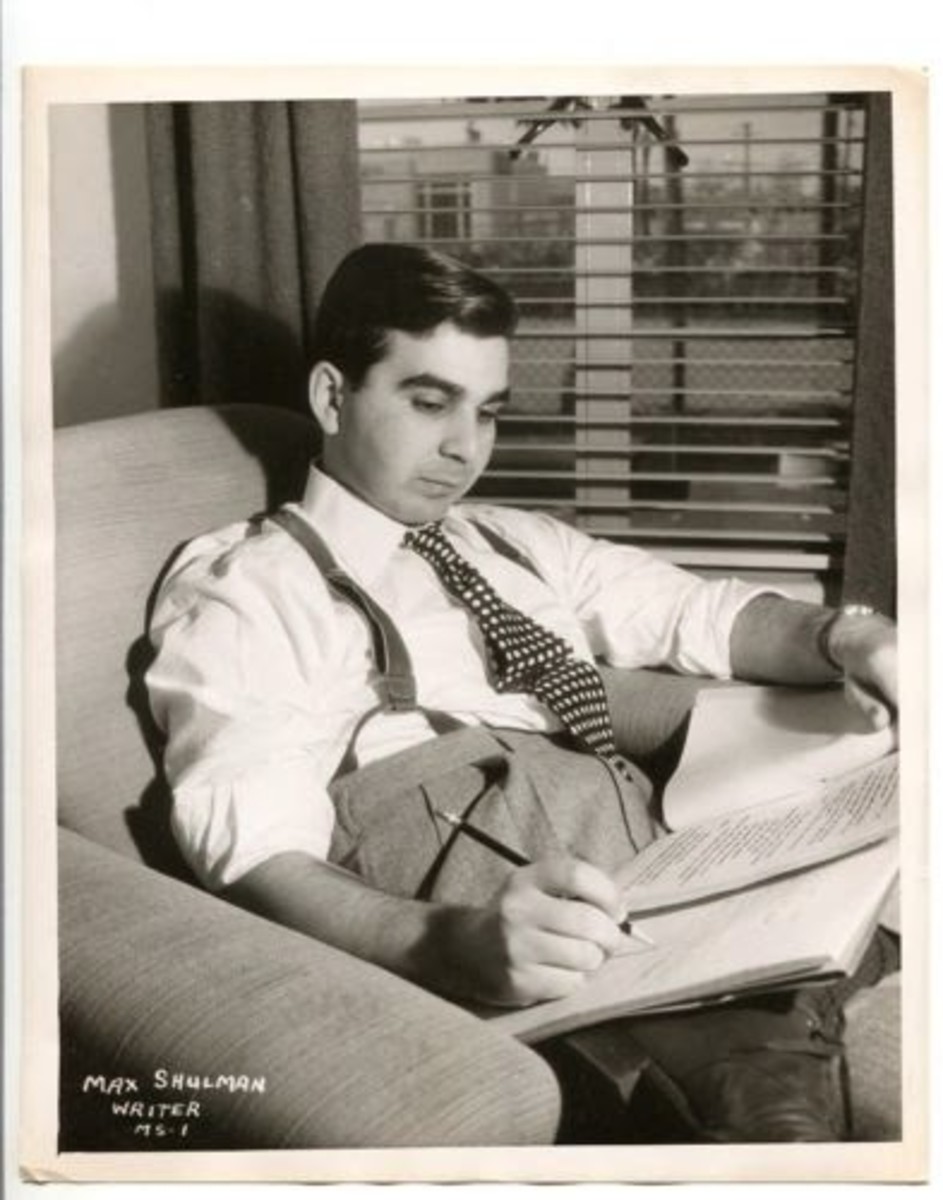On the Rez: Another Book Review and Then Some
Recommended, Learn More
At this point, I pretty much hate and despise all published authors who have truly made it. It gets that way after having held so many litterateurs in high esteem for such a long time. Why should I praise the pipers I followed down the primrose path? I continue to write, a writer manque´, but not like before. Still, how can I hate a man who describes so vividly the sound of ice-scrapers on windshields the day he rides off into the Black Hills? The author of On the Rez feels bad about writing up his friend Le, who lives in Pine Ridge, South Dakota. He admits "feeling guilty" for being a white guy -- not just factually, but behaviorally, too. True to stereotype. He is self-critical about telling in part Le's biography just to sell a book -- or something like that. "I was in a bad frame of mind," (161) he writes, the day he drove into an accident. There was nowhere in Wyoming to have breakfast. So he decides to drive two hours into Billings, Montana. It is along a stretch where the Interstate narrows that he gets impatient and tries to pass a Ford pickup. The left lane by now is full of snow. He presses on the accelerator. Frazier smashes all the way through the protective barbed wire, skidding sideways. Strangely, everybody else is okay. So is he, it turns out, though to hear his version, one would think that accidents maybe really were meant to happen.
Within minutes not only do the police arrive, but so does a Billings Gazette journalist. He is out and about taking photos of wrecks. This is one of those days when the wind blows, the snow is like an avalanche, and visibility, especially through the back window, becomes a nightmare. He prevails upon the reluctant author, who has a soft streak, because the shutterbug is petrified to drive further, and besides, this is a slam-dunk. Then the tow-truck arrives and it is over to the Sinclair Station to fix the roof and also tape the windshield to the frame. Eventually, he makes it to a Super 8, but still feels as though he is skidding when he enters the room. Further, his ordeal is not yet over.
Well, I do not want to re-write the book. The long and short of it is that the crash helped seal the wound. His friend calls and they talk a while about wrecks. It turns out, sadly enough, that they are actually a part of the fabric of life on the Rez. Le has been in quite a few. Each year, fatal alcohol-related accidents reap their bitter harvest. Or, so it is reported by the author, from Pine Ridge, which accommodates the Oglala Sioux, with whom the author feels an abiding affiliation. As well as from Le, who says he has been in wrecks which claimed lives and others that did not.
Shrink-wrapped knowledge
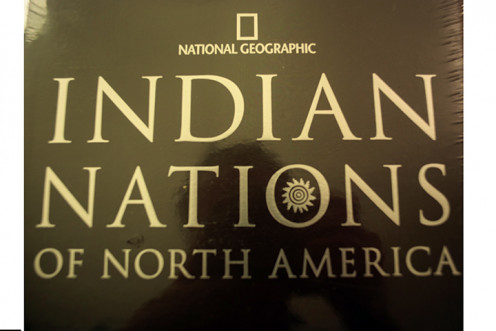
On Encyclopedias
One cannot read an encyclopedia anymore than a dictionary from cover to cover and hope to actually come away with rich knowledge coupled with understanding. It does not happen. Knowledge is not equivalent to words or actions. Moreover, it needs to be filtered, usually by means of a concerned individual, though the idea of a computer which meets certain standards cannot be ruled out. Once again, this is why I champion the non-fiction essay, however arranged, into chapters or headings, chronologically or diachronically.
Encylopedic Knowledge Made Simple After a Fashion
After a few pages, one feels that the author can be trusted regarding his rendition of actions and events informing the history of Native America. He is heavily biased, but there are good and proper reasons for that. Neutrality is "devoutly to be wished" in many cases lost in the fray. There are those who are unaffected by Native American affairs, past, present, or both. And there are those who feel very much involved, if only in an over-arching, possibly meaningless intellectual fashion. By now, interesting historical matter has filtered into commonplace conversations such as those the author chooses to relate. For example, residents of Pine Ridge comment on how Indians have been portrayed in the movies, as well as who did the portrayals. Thousands of Indians played parts. Included in this rambling but informative talk are some rather droll stories about contracts and bonuses on the sets. As well as the expression of outrage over Whites who got leading Indian roles, all understandable enough. After all, Crazy Horse and Red Cloud were not, point blank, of European descent.
Ian Frazier is not, to reiterate, himself a Native American. But he has answered a calling that many others as well feel begins with a sense of solidarity. It is easy enough for some of us to relate to Frazier. But what about his friends, Le and Floyd George? We get real clues as to how they think from their comments, such as Le's wrath for Abraham Lincoln. According to the historical record, after a Sioux uprising in 1862 (99), Lincoln commuted more than two hundred sentences of death. Nonetheless, the entire proceeding entailed thirty-eight hangings. Le, himself a Sioux, cannot even listen to the author's arguments on behalf of Lincoln, whose reputation over the past few years has only become more and more gilded. And Washington, too, Le describes as an "Indian-killer".
I like learning about the broad-based mindset of the Rez. It is a complete mystery to me. This one in particular is especially important owing to the Wounded Knee Massacre of 1890. I think it is important as well as honest, and even, from my own radical point of view, acceptable to remain hostile, mentally, and hold an historical, if deceased, enemy responsible. But there has to be a cutoff point. After all, this is not original sin being hammered. As to where that leads, I am clueless. Is every White the repository of injustice and outrage? There is a degree of "violence" in having to hear an opinion that goes against the grain of what almost all Americans hold sacred, such as anti-Lincoln, anti-Washington rhetoric. But it only takes a moment's reflection to see where the attack is coming from. The blood of the victims now flows in the veins of living descendants. Bottom line, trading insults might be a whole lot better than a return to the Indian Wars of the 19th century.
Resentments linger. That much cannot be gainsaid. And there is not enough alcohol on planet earth to drown them out. That does not stop Native Americans from trying. Frazier comments plaintively on how there are no more Indian bars in LA, Phoenix, St. Paul, and Butte. I did not even know that they were once there, nor that 91 out of some 293 reservations sell alcohol. I believe him when he says that reservations can at times smell like Budweiser. Roads leading in and out are cluttered with Budweiser cans and bottles. And then there is the trivia having to do with the diorama of Custer's Last Stand that Busch of Anhauser-Busch used to sell Budweiser and eventually bought. It all adds up somehow.
But to what? Gallup is supposed to have a jail that holds five hundred to accommodate the intoxicated. Native Americans like the watering holes of border towns. Often, they are released and while walking up the road home, hit by automobiles and trucks. What gives? Or what about planes that routinely harass reservations? In 1995 (p. 88) a Stealth Fighter crashed on a Zuni Reservation. Are these complaints figments of the imagination? Or are they for real? One can understand after taking so much else in that the author's statement that dark is actually darker on the Pine Ridge Reservation is legitimate. It probably is. At times, it must certainly feel that way. Or how about enduring grievances from Indians for having been mistreated by the police in Denver, Minneapolis, and Rapid City? Naturally, tension must be a constant element of lives led either on and off the reservation that are always on collision course.
Laws
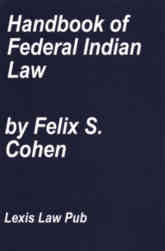
What is the Law?
"What is the Law," says the mad doctor, Moreau, to his flock of weird animals on a deserted island. All misdeeds seem to lead to the "House of Pain" (Island of Dr. Moreau, 1977, 1996 & Island of Lost Souls, 1932). But a glimmer of hope arises from the passage in the book that has to do with Indian Law. Just about in the middle of the book there is a reference to Felix Cohen, expert and author of the Handbook of Federal Indian Law, published in 1941 (193). Tapping the human brain might appear ludicrous at first blush. Rez snaggles are not cerebral meanderings but real wants and needs gone unfulfilled or fulfilled only in part. Legalities certainly come into play when speaking credibly about Indian affairs. The unfair treatment of Native Americans and treaties that turned out to be bogus are a permanent stain on the history of the U.S. Maybe laws should be taken more seriously than their casual semi-enforcement indicate. Again, as to what can be done now to redress the errors of the past, it is not at all an easy question.
Interestingly, Felix Cohen is cited in a passage dealing with places on the Rez that have been named after outstanding men and women. Among them are the Moses Two Bulls Tribal Court, the Paul "Dizzy" Trout Field House, the Leroy "Sunshine" Janis Memorial Park, the Billy Mills Hall, and the Felix S. Cohen Retirement Center. As elsewhere, famous athletes take center stage, but in this case so does at least one from the outside who mastered the law. As an arbiter of disputes, the practice of law probably outshines all other avenues combined chosen to mediate.
The Island of Dr. Moreau
Ian Frazier

On the Rez
Pine Ridge Rez
The Truth about Pine Ridge?
I respect investigative journalism. I'd love to worm my way into this field. Unfortunately, it would take a genuine expense account to get the skinny on Pine Ridge. One has to go there and immerse oneself in the life, land, customs, leisure, and work that informs this particular reservation. I have seen other U-Tube videos that do not make the Rez in South Dakota look quite so bad. A special features video from the movie, Rez Bomb (2008) shows lots of buildings that are not eye-sores, including a shiny yellow Shell Station. Plenty of the people filmed look good, spunky, and healthy. But the poverty that dogs this reservation cannot be denied. And that is the main aspect that the video herein deals with.
Red Cloud
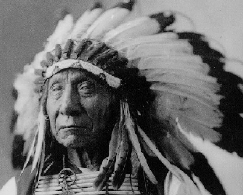
Chapter 11
Chapter 11 usually has to do with bankruptcy. But not in this book. Instead, it begins with a short history lesson on the biography of Red Cloud. Less known and/or celebrated than Sitting Bull or Crazy Horse, he was nonetheless a shrewd and powerful leader at a time when Native America was producing leadership in relative quantity to challenge the superior forces aligned against it. It is hard to say, looking back, what exactly their significance was since no matter how hard they hurt their enemies, the latter were destined to return the hurt exponentially. But among the legendary heroes of Native America they at least stand forever as symbols of a profound resistance to the reservation life that would ultimately take root. The Sioux did not capitulate peacefully. Those under Red Cloud's command aggressively opposed the gold rush trail that eventuated in what some think was nothing short of the theft of the Black Hills. They also protected their Powder River hunting grounds.
What is interesting to me, however, is how personalized a few facts, dates, and statistics can become. Frazier admits that his admiration for Crazy Horse diminished Red Cloud's stature in his eyes. Red Cloud came to prominence on his own, unlike Crazy Horse, who distinguished himself at the Battles of the Rosebud and Little Bighorn. At the time, Red Cloud was "at peace" with White America, and may actually have conspired, out of jealousy, in the untimely death of Crazy Horse. It was earlier on that Red Cloud became known in his defiance on behalf of the people of the Black Hills. His victories over those who tried to maintain a trail that would feed into Montana resulted in the Treaty of Fort Laramie in 1868.
Hostilities might have ended happily in a treaty that proved too good to be true. Eventually, Red Cloud signed a piece of paper that may have undone his larger and better reputation. With this act, the kind that Native Americans never really excelled at in the 19th century, he in effect sold the Black Hills. Red Cloud's misfortunes after this unintended action all seem to relate to the mixed blessing of a long life. By the time he died, only a handful of policemen are reputed to have attended the funeral. But the reversal for Frazier comes about when he finally meets, face to face, a Red Cloud. He then declares Red Cloud to have been arguably "the most important Indian leader of the nineteenth century." (185)
Red Cloud's claim to fame: the Bozeman Trail
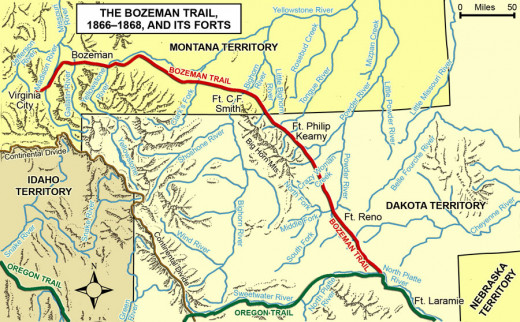
SuAnne Marie Big Crow 1974-1992
SuAnne Marie Big Crow died very young. That much is tragic enough. But to think how high her star might have risen after so precocious a start only increases the tragedy tenfold. A people are always in need of exceptional representatives. In SuAnne, a female Oglala, the Sioux had stumbled upon an unlikely source. Toward the end of his book, Frazier eulogizes SuAnne. In doing so, readers become acquainted with her mother, Chick Big Crow, and a collection of siblings, friends, and others. Her mother, for instance, was strict. She eschewed both drugs and alcohol. She encouraged sports. SuAnne, who used to like Nancy Drew, House on the Prairie, and the Babysitter's Club, came to practice basketball very hard after becoming 5'5" in 8th grade. Her name, Big Crow, was an esteemed name, comparable to Spotted Tail or Red Cloud. People on the Rez wanted to talk about SuAnne. She was widely admired.
Off the Rez, the saga of SuAnne Marie is not all that well known. Frazier gives her memory more pages than many another topical matter in Sioux history. She had managed in so short a time to become a Pine Ridge superstar. Her personal data helps establish the profile of a well-liked, talented, and social-conscious tribal member. She loved her reservation. Had there been more female basketball stars, things might have been different. But as they were, she became an admirer of Magic Johnson. Owing to her mother's unpermissiveness we find out that she waited longer than normal to go out on a date. Most of all, Frazier cannot forget her dancing at the Lead H.S. court. She used her starter jacket as a shawl. SuAnne alone broke the Indian-Non-Indian friction that was in the process of bringing shame to a high school sports event. She also loved McDonalds. She had an appetite for Big Macs. And she was charitable, too.
Basically, she played games for the Pine Ridge Lady Thorpe's Basketball League. But she also went against the Boys' Team at a more mannish type of game played without fouls. It was in these very stenuous contests that she distinguished herself as an equal. But she had not become in all this time a superwoman. Subjected to all the infirmities endemic to the human race irregardless of race, she had no superpowers with which to stop the accident of 1992 or ameliorate its severity. Drivers seldom slow down, if there be no glimpse of police vehicles. Why do drivers fear tickets more than their own mortality? The Interstate was her undoing. There is no real way to explain it.
Basketball Champion with Leadership Qualities
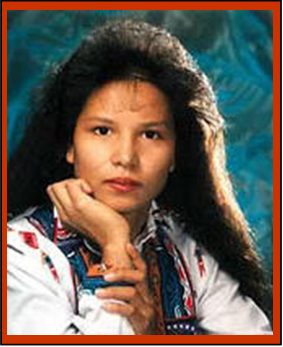
A Long Ascent, A Short Descent
The subject of ancient America is, practically speaking, free and open. Almost anyone can conjecture anything with a degree of plausibility. Chariots of the Gods, by Erich von Daniken, entertains the notion that the Americas were visited not infrequently by aliens from outer space. At least one religion claims that the persecuted from the political and cultural turmoil of the Middle East sailed across an ocean to find refuge in the other hemisphere. Several civilizations on its soil are well-documented and researched. In their wake, they have yielded numerous archeological sites. Into this fabric must be woven the lengthy saga of North America, including that of the Oglala Sioux, as well as their ancestors. There are scholars fast at work delving into these matters. But the more important fact is that much has disappeared without a trace, or close to it. Whatever the conquistadors from the West and the colonialists from the East encountered had not been there since time immemorial. The multi-national invading force from overseas that ruined just about everything for the native inhabitants of the Americas succeeded in also wiping out some of the memory of the departed. All of which is prelude to the associative fact that books like this one achieve a great deal in the absence of so much else. When the three boats of Columbus arrived, the Americas were still evolving. The full blossoming of the descendants of the ancient Americas will never be known. But their mass slaughter at the hands of, among others, early Americans, is something that has to be brought into the open in order to be fully dealt with.
Chariots of the Gods
The Mystery of Ancient Tribes
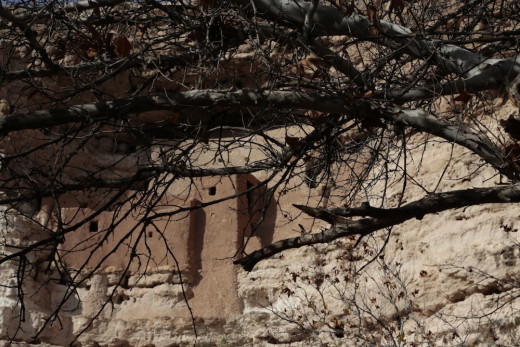
Native American Studies
Ian Frazier's insights are indispensable. They refer to a proud and lengthy North American history that is too often overlooked. Cliff-dwellers in the SW built very impregnable and impressive-looking edifices into mountainsides. They are baffling in that how they came about and were eventually abandoned has never surfaced with any degree of air-tight accuracy. Scholars have to make educated guesses to fill in gaps. Although their progeny were conquered, there is no profit, really, in attempting to erase or belittle their ancestry. It was not the same as European culture. It was different. And it is more the property of Native Americans than not. It is more important, that is, to find out what Native Americans today think of their predecessors than leave the job wide open to scholars of various non-Indian backgrounds. To my mind, there must have been predator nations against whom more peace-loving tribes invented numerous responses. Cliff-dwelling must have been one such option. But since they were completely left at some time, one can only speculate on the reason for the flight of these brave inhabitants. In my mind, I draw a parallel between these buildings high up to reservations in the middle of nowhere, far from the maddening crowd. That is to say, perhaps the Rez is only a phase, destined to be replaced or done away with altogether. For they are at best a neutral compromise to eliminate acts of hostilities. The Sioux were a proud nation. There is much to admire and, in Frazier's case, as well as my own, privately, to relate to. In the future it is more likely than not that they eventually re-invent themselves and transcend the irksome problems of today. It would be nice, however, if they were to make this accomplishment with the helping hand of others, whose ancestors may well have tried to wipe them from the face of the earth. Such is the liberal mind, admittedly, dreaming dreams that may or may not come true.




